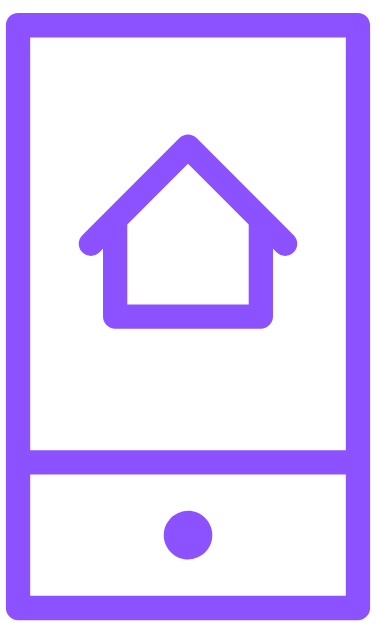Table of Contents
Smartphone Use
We live in a tech-centric world. Every day, we rely on countless screens to get things done, from our smartphones to our desktop computers and tablets. While there’s nothing wrong with making life more convenient through the right tech, we’re quickly progressing towards a dangerous phenomenon.
Our phones are starting to own us, rather than us owning them.
According to the research, smartphone usage has doubled in the last five years, and the average person spends at least 3 hours per day on their mobile.
It’s time to reduce the dependence that we have on our screens.
We all need to embrace the age of digital minimalism.
Defining Digital Minimalism
Embracing minimalism isn’t about throwing away all of your belongings and living with less stuff.
For some people, that is part of the process. However, the important thing is the mindset. To be successful with minimalism, you need to be cautious and intentional about what you choose to own.
In other words, as Mary Kondo tells us, only keep the things that bring joy to your life.
Digital minimalism is all about being intentional with the way that you use technology.
That means that instead of just allowing your phone to suck up your attention span and destroy your sleep, you mould it into a tool for success. For instance:
- You use your phone as a system to amplify productivity, rather than allowing it to distract you or prevent you from getting things done.
- You use your phone only when you need it, instead of using it whenever you see a notification or hear a beep. You’re not controlled by the demands of the phone.
- You don’t stay on your phone for hours at a time. You know what you need to do when you pick the device up, and you get the task done.
So, how do you take the minimalist approach to simplify your phone?
It’s a lot easier than you’d think.
Step 1: Remove Non-Essential Apps
If you’re looking for an excuse to procrastinate, your smartphone will always deliver.
Our phones are inherently distracting. Particularly when we pack them full of apps intended to capture our attention and keep us looking away from the world around us.
The first step in creating a minimalist phone is to make using it less appealing. Start by removing some of the apps that you haven’t used in at least a month.
Getting rid of apps will give you fewer excuses to use your phone. At the same time, you may also reduce your exposure to attacks. A lot of criminals find their way into smartphone data banks through applications.
Once you’ve got the extra weight out of the way on your smartphone, then you can start thinking about whether you really need the most demanding apps. For instance, many of us spend at least 2:40 hours each day on popular social media channels like Instagram, Snapchat, and Twitter.
If you can remove these apps from your phone, you’ll be less likely to check your profiles when you don’t need to. Remember, you can still access the content that you want from your smartphone browser if you wish.
At the same time, try to remove as many infinite scrolling apps as you can. Those are the apps on your phone that can continue to offer new and shiny things the more you scroll. Those include apps like Instagram, Tik Tok, and so on.
By the time you’re done purging, everything on your phone should serve a definite purpose.
Step 2: Turn Off Sounds & Notifications
Simplifying your phone and overcoming your addiction to technology doesn’t have to be as complicated as it seems. You don’t necessarily need to sell your phone and switch to something more minimalistic – unless you want to.
However, you do need to make your device less demanding.
For instance, once you’re done getting rid of pesky apps, you’ll need to think about another incredibly annoying aspect of your device – your notifications and sounds.
Notifications are similar to having someone tapping on your shoulder at all hours of the day. They leave you always on edge, expecting the next buzz or chime.
To help you focus on the world around you more than your phone, remove all notifications aside from the crucial ones – like your phone calls and messages. Once you do decide to check your phone, make sure that you’re just looking at it for a moment or two, not sitting and staring at it all day.
When you’re supposed to be focusing on work, meditation or family time, turn your phone on silent completely. You’ll always be able to call someone back if they contact you about something urgent.
Remember, your phone doesn’t control you with flashing screens and sounds.
Step 3: Create a Minimalist Home Screen
Okay.
So, you’ve dealt with time stealing apps and turned off those pesky notifications.
Now, let’s deal with the home screen trap.
Usually, when you unlock your smartphone – even to do something simple, like checking your email, you’re bombarded with an endless supply of apps, badges, and notifications. It’s no wonder that we end up forgetting what we were meant to be doing and getting lost in all the activity.
Fortunately, you can reduce your risk of being overwhelmed by your screen by removing some of those home page applications and widgets. Start by just having one thing on the front of your phone home screen – a clock. If you need to have apps underneath that, stick to three or less. Maybe you’ll have your note-taking app, your calendar, and your WhatsApp application.
The rest of your apps can go into a single folder and be placed outside of your home screen. If you only have one page on your phone, then keep your folder in the bottom corner of the screen, where it’s less likely to take up your attention.
Once you’ve sorted the app situation out, think about how you can make the home screen less eye-catching by removing any animations and overwhelming wallpapers. Get rid of that wallpaper that constantly changes from one second to the next and replace it with something simple that makes you smile or feel more peaceful. You don’t need a wallpaper that’s always scrolling through your entire gallery. It’s more likely to demand your attention.
Practice Some Self Control
The three steps above will help you to design a more minimalist smartphone.
However, simplifying your device is only the first step. You’re also going to need to build up your self-discipline and make sure that you can stick to your strategy of eliminating distractions.
The tips above won’t work if you’re determined to dive into every folder to re-discover the applications that you’ve put to one side. You’ll need to make sure that you’re being more mindful of the way that you use your phone too.
For instance, consider timing how long you spend on your phone whenever you check it at work. For example, if you need to check something on a message, give yourself a total of 20 seconds from the moment you pick up your phone to find what you need and get off your phone again.
If you can’t give up your phone habits immediately, consider setting out a gap of time each day where you can sit down with your device for 20 minutes and scroll to your heart’s content.
For instance, you might choose to have a phone-focused session before work or spend twenty minutes of your lunch, checking your phone. Just remember, once the time is up, it’s up.
You can’t hit the snooze button and give yourself five more minutes of browsing.
You need to be disciplined.
Discover the Benefits of Being Minimalist
Creating a minimalist phone setup can make a massive difference to your life.
When you’re not spending all of your time being distracted by your phone, you can spend a lot more time actively engaging in the world around you. After all, that’s how you make the memories that matter.
As much as we all appreciate having our phones around to help us with getting things done, communicating with friends, and more, it’s important to have limits. Phones are designed to soak up your attention and drain your focus.
Unfortunately, manufacturers want you to be addicted to your device. Hence, you spend more time using it, and more money on the latest gadgets.
However, if you can be mindful of the way that you use tech, you can go back to a world where you own your devices, not the other way around.
What will you do with the extra productivity you gain from simplifying your phone?





